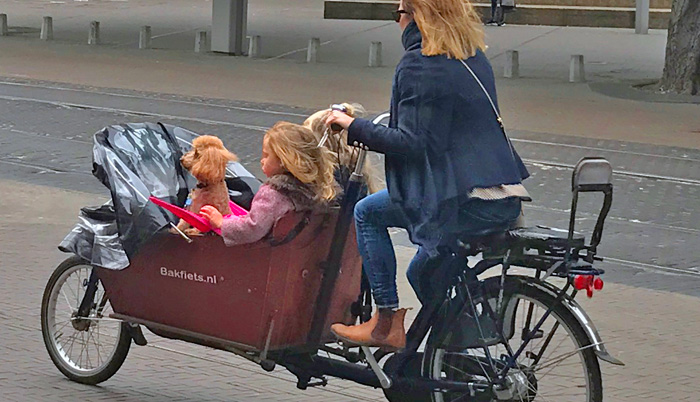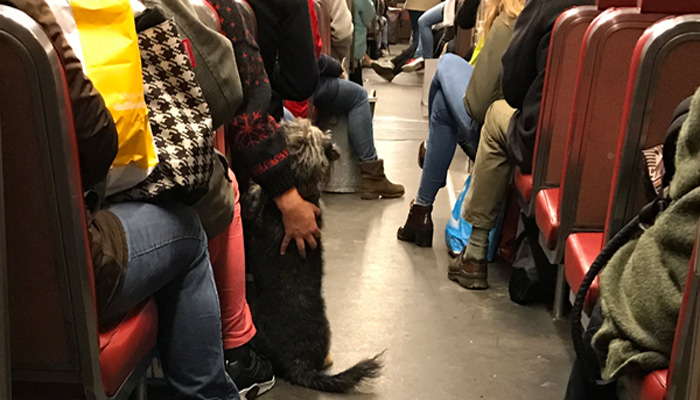Pets in Netherlands
Information for expats about pets in Netherlands, bringing a dog, cat or other pet with them, the EU pet passport, rabies vaccination, chipping requirement, Dutch dog tax, pet shelters, veterinarian care and more…

PETS FROM INSIDE THE EU
The European Pet Passport allows for qualifying domestic animals (dogs, cats and ferrets) to freely cross borders in Europe. There is not yet a union-wide standard for other animals, so local laws will apply.
The regulations below apply to the non-commercial transportation of up to five pets in Netherlands. Different rules apply to animals being transported for trade purposes. Special provisions are also made for assistance, military or rescue animals.
An overview of the importation of pets in Netherlands from another EU country can be read here.
PETS FROM OUTSIDE EU
If the country of origin has the same rabies control processes as Holland, the owner only needs to prove that the anti-rabies booster vaccinations are valid and up-to-date. They can enter with pets in Netherlands at any of the points-of-entry listed here.
There are currently 52 complying countries and territories including Australia, Canada, Hong Kong, Japan, Mexico, New Zealand, Singapor and United Kingdom among others. For a complete list of compliant countries visit the EUROPA website.
Animals from countries not included on the list need to have complete anti-rabies treatment. Additionally, animals from countries not included on the list may only arrive at an authorized point-of-entry in the Netherlands. These include:
- Amsterdam Schiphol Airport
- Port of Amsterdam
- Maastricht-Aachen Airport
- Port of Eemshaven
- Port of Harlingen
- Port of Rotterdam
- Port of Vlissingen
An overview of the import of pets from a country outside the EU can be read here.
PET CARRIERS
It is essential to ensure that the pet is eligible to travel not only to or from the Netherlands but also any other countries it may pass through. The animal will have to travel in an approved container. This does not apply if travelling by car within the EU.
The container must be big enough for the animal to stand, sit and turn during the journey. It must allow adequate ventilation. Some airlines allow small pets to travel as hand baggage on flights of 10 hours or less, also in an approved container. There is usually a maximum limit of two animals traveling in the cabin with a single owner. Regulations on carrier size as well as the policies on carrying pets in the cabin vary between airlines. It is recommended to contact the airline directly before booking.
Animals flying to the Netherlands on a flight connecting through the UK cannot fly in the cabin and must travel in the hold as cargo. If any in-hold journey is longer than a few hours, food and drink may need to be supplied. The International Air Transport Association (IATA) has comprehensive information on acceptable animal containers
The same carrier-standards often apply to animals traveling by ship or train.
PETS ON PUBLIC TRANSPORT
Small pets in Netherlands are allowed to travel on trains at no charge if they are small enough to fit in a basket or small cage placed on the passengers lap. A larger dog that does not fit this description can be taken on the train but a supplemental dog ticket (‘dagkaart-hond‘) must be purchased. This can be done online or at one of the yellow and blue OV-Chipcard machines at the station. While traveling on the train, the dog must stay on the floor (not on a seat) and cannot block the aisle.

There is no charge to take a dog on a tram or metro. The dog must stay on the floor and not in a seat.
Guide dogs for the visually impaired travel free-of-charge on all public transport. The European Blind Union provides information on Guide dogs in the Netherlands. Also see the Dutch Guide Dog Association website for additional information.
DOG WASTE
In every municipality across the Netherlands, an owner is expected to carry an item with which they can ‘scoop the poop’ generated by his/her dog(s). Those who do not pick up after their dog are committing a fineable offense.
DOGS ON BEACH
Dogs are allowed on beaches during the off-season (October-March). The owner is responsible for the dog’s behavior while on the beach as well as for cleaning up any waste the dog may have left. Sign posts show whether the dog is allowed to run free or if they must remain on a leash.
DUTCH DOG TAX
There is no dog licensing in the Netherlands but many municipalities charge an annual fee to dog owners. Hondenbelasting is one of the oldest taxes in the country and was originally established to limit the number of dogs living in a city. The annual amount of the tax is set at the municipality level and varies based on the number of dogs owned. For households with more than one dog, the cost typically increases with each additional dog.
An owner is responsible for declaring a dog in their household within a set period of time from when it is acquired. This typically ranges from 14 days to 3 months. Owners who do not register their dog within the specified period can be fined. Cats do not need to be declared as there is no cat tax.
Read more about the local dog tax assessed in these Dutch municipalities:
The cities of Almere, Amstelveen, Amsterdam, Breda, Delft, Groningen, Hilversum, Leiden, Leiderdorp, Leidscendam, Nijmegen, Rijswijk, Rotterdam and Voorburg no longer charge dog tax.
DANGEROUS DOG BREEDS
All dogs found to show acts of aggression must undergo a behavior test and behavior-correction training if necessary. Dogs that fail may be euthanized. Dogs kept as pets in Netherlands that fall into the category of dangerous breeds must pass behavior testing before it can be bred, regardless of whether or not the dog has shown aggressive tendencies.
The owner of a dog classified as a dangerous breed are liable for any damage to people or property inflicted by their dog.
Below is the list of breeds classified as ‘dangerous’ by the Dutch government:
- Akita
- American Bulldog
- American Pitbull Terrier
- American Staffordshire Terrier
- Boerboel (South African Mastiff)
- Bull Mastiff
- Bull Terrier
- Cane Corso (Italian Mastiff)
- Dogo Argentino
- Dogo Canario (Canary Mastiff)
- Staffordshire Bull Terrier
- Rottweiler
- Tosa
- Fila Brasileiro (Brazilian Mastiff)
- Anatolische Shepherd Dog
- Ukrainian Shepherd Dog
- Caucasian Shepherd Dog
- Pitbull
- Bully Kuta
- Alano
- Bandog
LOST OR FOUND PETS
Dutch veterinarians (dierenartsen), animal ambulances and animal shelters (dierenasiel) have microchip readers. Bring a found animal to any of these organisations and they will do what is required.
The pets in Netherlands database (Nederlandse Databank Gezelschapsdieren)
Europetnet operates a similar service throughout Europe. Pet owners need to register the animal’s microchip number with the Europetnet database. This will allow for the missing animal to be traced from any member country in Europe.
If you find an animal that has been injured, contact the appropriate regional emergency animal services.
DUTCH PET INSURANCE
Pet insurance (dierenverzekering) can come in handy to cover costs when your dog or cat needs to visit the veterinarian for a periodic checkup or if they should become ill or injured. Typically a basic pet insurance plan will cover things such as consultations, x-rays, anesthesia and medicine. A supplemental pet insurance plan usually covers more extensive charges such as chemotherapy, physical therapy and dental work.
Pet insurance in Netherlands is offered by Figopet, InShared, PetSecur and Unive.
Related information…

